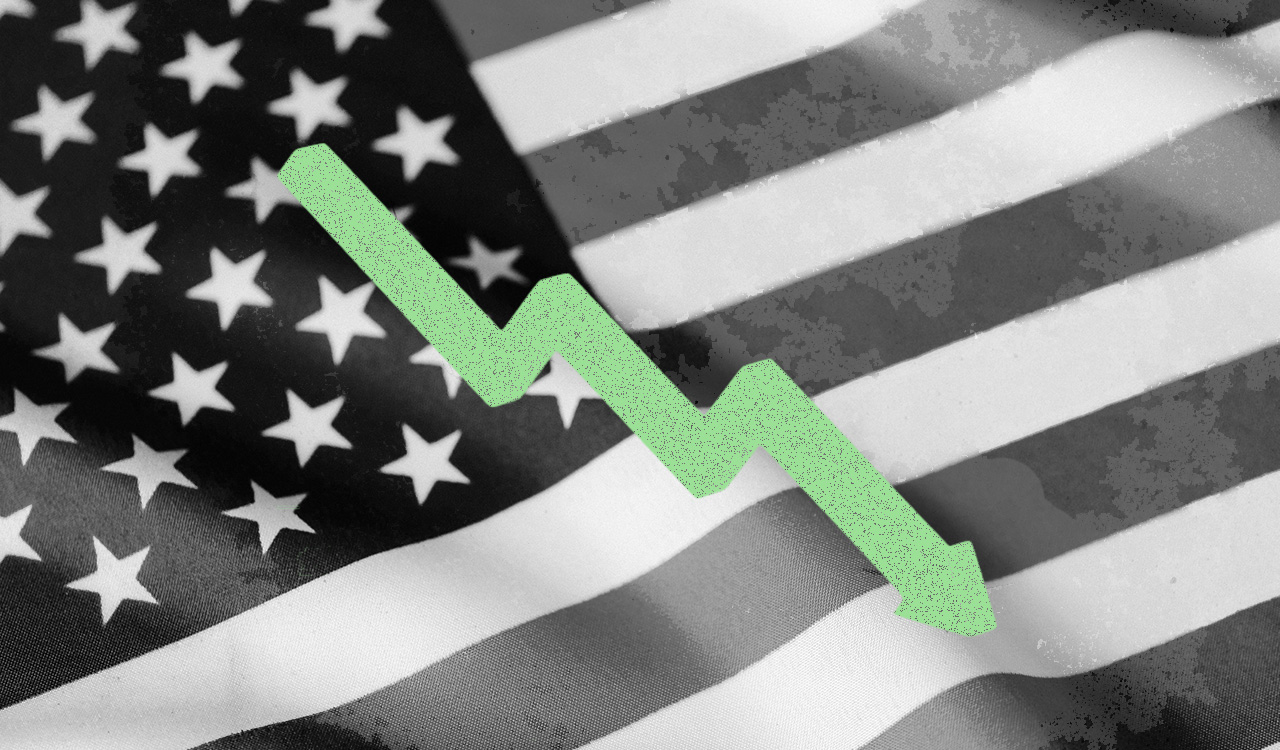Many retailers count on holiday sales for 20 to 30 percent of their annual sales, with some stores deriving even more annual revenue from the short time period between Thanksgiving and year-end. With that in mind, here is a cliff notes view of the economic environment that will influence holiday sales this year.
Shopper resiliency has buoyed the economy this year, with expenditures ranging from general merchandise to travel and entertainment. That has not come without a price. According to the Federal Reserve, American consumer credit card debt reached $1.03 trillion dollars in Q-2—ahead of this year’s holiday shopping season.
Inflation Down, Prices—Not So Much
The good news is that inflation has come down compared to last year, when the rate in July reached a peak of 9.1 percent. So far this year, the inflation rate average is 3.7 percent, compared to last year’s annual average of 8.2 percent.
Many consumers mistakenly think that a declining inflation rate means that prices are falling. It actually means that the rate at which prices are increasing is falling. This brings us to the bad news. It is likely that we are in the territory of a new normal, with prices beginning to stabilize at new all-time highs, with some fluctuations based on transient factors. Based on current conditions, there is little expectation that significant declines in prices will occur (unless we enter a full-blown recession.)
Today, the inflation rate is being pushed upward by two sectors: housing and energy. Oil was edging towards $100 a barrel before war broke out in the Middle East, which may put even more pressure on gasoline prices. According to the U.S. Labor Department, gasoline is up by 49.9 percent since 2021; a gallon of regular gasoline has averaged between $3.56 and $3.88 over the past few months. Home prices have seen hyper inflation, based on high mortgage interest rates and low supply, with sale prices in many regions of the country rising by 50 percent or more post-pandemic. For example, Redfin reports that Florida home prices have increased by 60 percent since 2019.
It\’s grocery store tabs that upset shoppers the most, and they’re not going to be convinced that things are getting better until the pain of high grocery bills lessens. Currently, the average price for U.S. meat/beef is $10.00 a pound and chicken averages around $4.50 a pound. At chain grocer Publix, in the past two years, a can of Campbell’s soup has gone from around $1.00 to around $2,00, and a 30 FL OZ jar of Kraft mayonnaise has gone from $3.29 to $7.99. Price increases like these of 100 percent or more stretch credibility with some consumers and have spawned the term, “greedflation.”
Inflation has also had a huge impact on other essential categories. For example, car insurance has increased by 16 percent on average in the past year according to the Bureau of Labor Statistics, and in some states by as much as 50 percent. Home insurance has become unaffordable for many homeowners—so much so that a migration out of Florida is starting because residents cannot afford to insure their homes in the state.
In August, the median price for a new home was $430,300 (Federal Reserve) and consumers paid an average of $45,516 for a new vehicle (J.D. Power). This is a problem. Simply put: prices like these are beyond the means of most middle-class Americans.
Housing Sales Decelerate
This country has rarely if ever seen a period of economic boom without a concurrent boom in real estate. Over the years, residential and commercial real estate have represented from 15 percent to 20 percent of the total annual GDP, essential to GDP health. Real estate has been stymied by rising mortgage interest rates, low market supply and sky-high prices. In October, the 30-year fixed-rate mortgage rose to 8 percent. This is bound to have a cooling effect on the housing market. Home sales are down in 2023 to date by 29.2 percent. In September, sales of existing homes dropped to the slowest pace since October 2010, during the midst of the Great Recession and foreclosure crisis.
In the meantime, thousands of homeowners who hold mortgages from past years with lower interest rates—some as low as 3 percent—are trapped in their homes, unable to afford the higher interest rates required to buy a new home (UBS reports that 61 percent of all outstanding mortgages have a rate below 4 percent.) Boomers, backed up by equity in current larger homes and lifetime savings, are the largest home buyer generational cohort and made up 39 percent of all home buyers in 2022. Deferring a mortgage, one-third of home buyers are paying in cash.
In contrast, in a recent Qualtrics survey, one in five millennials thinks they will never be able to afford a home. Gen Zers are more optimistic with 72 percent planning on buying a home, with 37 percent hopeful to do so within three years. The September 2023 Mortgage Monitor Report from Black Knight, said that with a 30-year fixed-rate loan, the average monthly payment was $2,306 in mid-2023, a 60 percent increase compared to two years ago. Additionally, Black Knight found that around one-third of borrowers were burdened with monthly payments of more than $3,000. Eight percent of all 2022 mortgage-purchased homes are underwater.
The National Association of Home Builders (NRA) reported that prices in nearly a third of cities began to fall in early 2023. Declines have occurred mostly in the Western states, while prices have continued to rise, though at a slower pace, in the Midwest, South and Northeast. Sales of new homes have been stronger than sales of existing homes probably due to the “HGTV effect.” Younger buyers are looking for homes that look like what they see on TV and are less interested in older homes unless they have been updated and are move-in ready.
There is a huge amount of pent-up demand for homes among younger generations, first-time buyers; retirees, wishing to downsize or relocate; as well as many families desiring to trade up to better or larger homes. If mortgage interest rates and prices stabilize, there is every reason to be optimistic about residential real estate. However, if prices collapse—which might happen if interest rates go much higher in the near term—this could spell big trouble for the real estate market and for the economy at large. This would reduce family net worth at a time when consumer confidence is already low and budgets are strapped, and it would negatively impact sales of dependent classes of consumer goods, including appliances, furniture, home décor, building materials and DIY retail, all of which have already slowed down. Home Depot reported a U.S. comp-store sales decline of 4.6 percent for the first quarter of 2023, compared to 2022.
Shopping, but Taking on Debt
Shopper resiliency has buoyed the economy this year, with expenditures ranging from general merchandise to travel and entertainment. That has not come without a price. According to the Federal Reserve, American consumer credit card debt reached $1.03 trillion dollars in Q-2—ahead of this year’s holiday shopping season. Contributing to that debt is an average credit card interest rate of 24.20 percent, with some credit cards charging as much as 29 percent interest. The average personal savings rate was only 3.9 percent in August, down from a decades-long average of 8.9 percent. With interest rates that high and reduced savings, many consumers may soon have trouble paying their bills.
According to the Census Bureau, Americans’ inflation-adjusted median annual household income declined by 2.3 percent, falling to $74,580 in 2022 from $76,330 in 2021, and is down by $3,670 from 2019.
There are some bright spots in the economy for consumers. There have been abundant jobs in the post-pandemic recovering economy and wages have increased for many workers. However, ZipRecruiter reports that average advertised salaries for most current job postings are lower than last year. Secondly, savers have found new opportunities for earnings with interest rates of up to 5 percent or more in the bond market, Treasuries and CDs.
Challenging Issues for Retailers
In its 2023 Holiday Retail Survey, Deloitte predicts that “Consumer enthusiasm for the upcoming holiday season is at levels not seen since 2019.” Deloitte expects consumers to spend an average of $1,652 each, a 14 percent year-over-year increase.
But the optimism is muffled by a lot of additional background noise that retailers need to pay attention to:
- Anxiety is increasing as global hostilities intensify, with fear that America will be pulled into military participation. Then there’s the outbreak of war in the Middle East, the ongoing war in Ukraine, and tensions regarding Taiwan to heighten the anxiety.
- Union strikes across a range of industries are causing disruption. Several retailers are already targets of Union activities.
- There is confusion as to whether or not student loans will receive monetary relief. If relief does not materialize, loan repayments may resume before the end of the year, stressing finances for loan-holders.
- Many retailers are experiencing problems with what is known as “shrink,” including smash-and-grab assaults by gangs and larger-scale theft by organized retail crime (ORC). This is an annual $100 billion problem. Retail violence is increasing along with this trend—694 fatalities occurred in retail stores in 2022—making customer and employee safety a growing concern.
- Retail competition has never been more intense. Online behemoth Amazon and No. 1 ranked largest retailer Walmart have absorbed a gigantic portion of total retail sales, and they are now being joined by a new rival with huge potential, TikTok Shop.
The end-of-the-year selling season promises, as the Andy Williams song puts it, “The most wonderful time of the year.” While prospects for holiday sales look good this year—Deloitte predicts an increase of between 3.5 percent and 4.6 percent—retailers, used to keeping their eyes on the economy, are being shadowed by other challenges as well.




